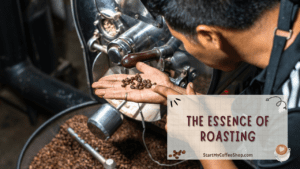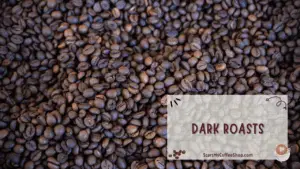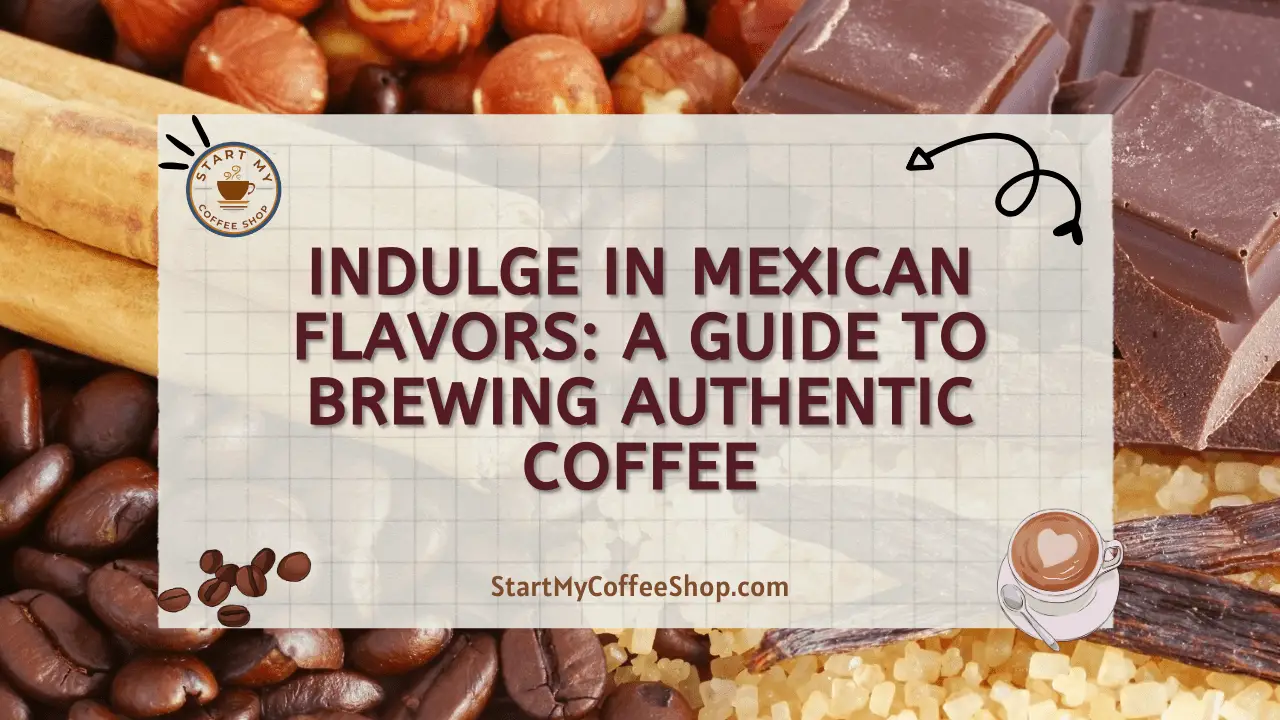Coffee is a popular beverage that millions of people around the world enjoy. It has a wide variety of flavors, scents, and qualities. The roasting procedure is one of the key elements affecting coffee’s flavor. To fully appreciate the richness and variety that coffee has to offer, it is essential to comprehend the primary roasting types.
The best way to explore coffee’s variety is for you to understand its main roasting types, such as Light, Medium, and Dark. Roasting impacts flavor through caramelization and Maillard reactions. Light brings fruity and acidic notes, Medium offers a balanced taste, while Dark delivers bold and bitter flavors.
This article will explore the nuances of each form of roasting. Explore your senses as we lead you through the world of coffee roasting varieties and explain how they contribute to its diverse and delectable flavor.
The Essence of Roasting

The crucial and transformational process of roasting gives green coffee beans the alluring fragrances and sumptuous flavors that we love in our everyday cups of coffee. These inconspicuous beans undergo a symphony of chemical transformations as a result of the tremendous heat of roasting, revealing their untapped potential and distinctive qualities.
The two main reactions that take place inside the beans during roasting—caramelization and the Maillard reaction—are what give roasting its charm. The sugars in coffee beans undergo a significant shift during caramelization. The sugars start to dissolve as the beans heat up, creating a wide variety of rich and decadently sweet flavors. This inherent sweetness lays the groundwork for the subsequent flavors, adding a lovely undertone that gives the finished cup of coffee depth and satisfaction.
On the other hand, the Maillard reaction is a true culinary marvel. It takes place when there is heat present and the amino acids in the coffee beans interact with the reducing sugars. A fascinating variety of new flavor compounds, from toasted and nutty to fruity and flowery aromas, are created as a result of this interaction. The wide range of flavors that distinguish and mesmerize each species of coffee bean is the result of the Maillard process.
The Maillard reaction and caramelization work together to produce a symphony of tastes as each bean goes through a precisely timed transformation during roasting. The depth and strength of these flavors are greatly influenced by the temperature and length of roasting. Light roasts preserve a more delicate and nuanced profile due to their shorter heat exposure, allowing the natural qualities of the bean’s origin to stand out. A larger body and richer flavors are revealed in medium and dark roasts as the roasting time increases, showing the skillful interaction of caramelization and the Maillard process.
In this process, the coffee roaster’s knowledge is crucial. The roaster carefully watches the temperature and time to make sure the beans reach their ideal taste potential, much like a conductor leads an orchestra. The intrinsic characteristics of the coffee bean must be preserved while also bringing out the desired flavor nuances in a delicate balance.
Read more about: How to Create a Business Plan for Coffee Shops: A Cappuccino Capital
Light Roasts: Embracing Fruity and Acidic Notes
Light roasts, a wonderful alternative to its darker siblings, are roasted for a shorter period, protecting the beans’ natural qualities. These beans, which are decorated with a light brown tint and a porous surface, proudly exude the essence of their country of origin and coffee type. The consumer is given a captivating sensory experience with each sip that highlights the nuances and particularities of the area.
It has a vibrant flavor profile that, in contrast to its more robust siblings, evokes a symphony of delicate and nuanced flavors. For those who like the fine skill of appreciating the subtleties in each cup, these roasts are a refuge. The shorter roasting period guarantees that the beans keep a more delicate and transparent flavor, allowing the coffee’s intrinsic character to emerge with unmatched clarity.
A distinguishing quality of light roasts is their increased acidity, which takes their attraction to new heights. This quality highlights the fruity and flowery undertones, giving the taster the impression that they are wandering through a fully bloomed garden. A blast of vivid flavors that are reminiscent of juicy berries, zesty tangs, and the seductive aroma of blooms welcomes the palate with each sip.
A popular option for people looking for a reviving cup to start their day, light roasts’ wonderful acidity also adds a refreshing and energizing character to the drink. The tastes are vibrant and lively, dancing merrily on the taste buds and leaving a nice aftertaste that remains like a pleasant memory.
The romance of the coffee’s journey from its place of origin to the final cup is included in the attractiveness of light roasts, which goes beyond its flavor profile. Each sip of coffee transports the consumer to the special terroir of the bean’s origin, allowing them to make a connection with the environment and the hardworking farmers who cultivated the beans to perfection.
Medium Roasts: Striking the Perfect Balance
The art of striking a harmonic balance between the natural tastes of the coffee bean and the transforming power of roasting is best shown by medium roasts, which are true to their name. The beans undergo a beautiful transformation as they soak up the mild heat, gaining a richer brown hue that alludes to the richness of flavor within.
This exceptional roast beautifully choreographs the waltz between acidity and body, creating a cup of coffee with a smooth, balanced flavor that captivates the senses. While still present, the acidity becomes more muted than in light roasts where it is more vibrant. The mild acidity gives the beverage a pleasing brightness without dominating the entire flavor, luring the consumer into a world of complex sensations.
Caramelization, in which sugars subtly change into entrancing sweetness, and the seductive presence of the coffee’s natural features interact to create the charm of medium roasts. The beans expertly incorporate the sweet flavors of caramelization, which give the cup a delicious depth and blend with the natural flavors to produce a symphony of flavor.
Medium roasts are praised for their adaptability, satisfying a wide range of coffee lovers with different preferences. This roast’s versatility makes it suitable for a variety of brewing techniques, including espresso and pour-over, ensuring a consistently excellent experience no matter the brewing method used.
The ability of medium roasts to highlight the greatest qualities of distinct coffee bean varietals has captured the attention of coffee aficionados. These roasts, which may be used with beans from South America, Africa, or Asia, enhance the special qualities of each location and let the beans’ varied origins come through in each cup.
Medium roasts are a great option for specialty coffee drinks because of their adaptability, which goes beyond the scope of conventional coffee preparations. The harmonious flavors work well in lattes, cappuccinos, and other espresso-based drinks, giving a foundation for the milk’s natural blending with coffee flavor.
Dark Roasts: Bold and Bitter Profiles

Dark roasts, which are the most audacious representation of coffee’s journey, subject the beans to a rigorous and revolutionary roasting procedure that pushes them to the limit. The outcome is a mesmerizing visual spectacle as the beans take on a dramatic dark brown or even nearly black hue, a testament to the rich flavor inside.
The coffee beans in this intense roast have a strong, robust taste that is meant to entice even the most discriminating palates. With each delicious sip, the stronger flavors emerge with intensity, announcing their existence. The taste sensation changes to a more velvety and full-bodied encounter that envelops the senses with its richness as the acidity retreats to a lesser level.
It’s a seductive symphony of tastes that have been expertly created by being exposed to intense heat for an extended period. The flavor profile produced by the union of the Maillard and caramelization reactions is nothing short of fascinating. The sugars undergo a significant alteration that gives the beans a seductive sweetness that enhances the overall flavor. On the other side, the Maillard processes arrange a delicious composition of flavor compounds, delivering enticing undertones of bitterness and smoke that give the cup depth.
Dark roasts are the perfect option for people looking for a memorable coffee experience. The strong tastes and long aftertaste provide a lasting sensation of satisfaction, encouraging the drinker to relish each sip as it is taken. Dark roasts are a treasured indulgence for coffee enthusiasts because they exude an air of sophistication and refinement with each cup.
Its attraction is beyond the boundaries of customary coffee recipes. These strong beans serve as the basis for popular espresso-based drinks like lattes and macchiatos, where their bold flavors blend beautifully with heated milk. The drinker is given a lavish and smooth mixture with each sip that perfectly captures the skill of coffee making.
Read more about: How to Create a Coffee Shop Business Plan: From Concept to Cappuccino
Mastering the Roast
Starting a coffee exploration adventure means entering a world of enticing flavors and olfactory delights. One must accept the many roasting kinds that define the beverage’s flavor and look beyond the usual coffee options if they are to fully enjoy the richness that coffee has to offer.
A symphony of artistic creativity and analytical precision is coffee roasting. Master roasters play a crucial role in determining the final flavor profile of the beans because of their refined skill and discriminating palate. To extract the best flavor and aroma from the beans, every step of the roasting process is painstakingly planned out with a keen eye on temperature control and time.
Green coffee beans, which have a wide range of flavor possibilities, are the first to be roasted. The secret to creating the alluring beverage that enchants coffee lovers throughout the world is the skillful application of heat to these modest beans.
The direction of the beans’ development is determined by a careful dance between temperature regulation and humidity. The beans experience a sequence of chemical alterations as they absorb the heat, which unleashes their taste potential. Lower temperatures enable the beans to keep a more delicate and subtle flavor profile while higher temperatures emphasize the intensity of the roasting, resulting in a more robust flavor character.
Timing is also very important because the length of roasting directly affects how complex the flavor of the beans is. A few extra or fewer seconds can have a major impact on the flavor, changing a coffee from vibrant and lively to rich and full-bodied.
The master roaster, like a conductor conducting a coffee orchestra, deftly manages temperature and time to create a symphony of flavors that reverberate in every cup. They make decisions based on their in-depth knowledge of the origin, variety, and special characteristics of each bean, preserving the coffee’s flavor throughout the roasting process.
As a result, there is a wide variety of roasting varieties, ranging from light roasts that are lively and acidic to dark roasts that are bold and intense, with varied medium roasts in between. Each kind of roasting has its history and bears the imprint of the master roaster who gave the beans their life.
Impact of Roast Levels on Caffeine Content:
Contrary to popular belief, there is no simple correlation between coffee’s caffeine concentration and roast level. The common misconception that darker roasts have lower caffeine content because they were roasted for longer calls for a closer look into the intricate relationship between weight, density, and caffeine content.
While it is true that prolonged roasting can cause the caffeine content to drop, the change is not purely a result of roast level. Beans’ weight and density significantly alter during roasting, as well. Darker beans may appear to have less caffeine in terms of volume because of their robust and rich appearance, which points to a denser composition.
However, weighing the caffeine concentration is a crucial step. Surprisingly, darker beans have a similar amount of caffeine in them as their lighter counterparts, while appearing to be less voluminous. Dark roasts are a notable competitor in the quest for caffeine because their higher density makes up for their smaller size.
So choosing a roast level shouldn’t be based just on caffeine concentration. Instead, one should pay attention to the preferred flavor profile and let the subtleties of taste and scent guide the choice. It is crucial to understand that caffeine level should not be the only factor in the search for the ideal cup, regardless of whether one prefers the robust, rich notes of dark roasts or the bold, bright notes of light roasts.
Frequently Asked Questions

What are the main types of coffee roasts, and how do they differ in flavor?
Light, Medium, and Dark coffee roasts are the three main varieties. Dark roasts produce strong, harsh flavors, while Medium and Light roasts feature fruity and acidic undertones.
How does coffee’s flavor change as a result of roasting?
Caramelization and Maillard’s reactions are the two main processes through which roasting coffee beans affect flavor. Sweet and nuanced flavors are revealed by caramelization, whereas a variety of delicious taste compounds are produced by Maillard reactions.
Which coffee roast works best for blends or single-origin beans?
To accentuate their distinctive characteristics, single-origin beans are frequently best served with light roasts. Combining light, medium, and dark roasts in coffee blends results in a cup that is harmonic and well-balanced.
To learn more on how to start your own coffee shop, check out my startup documents here.
Disclaimer: The information provided by StartMyCoffeeShop.com (“The Site”) is for general informational purposes only. All information on the Site is provided in good faith. However, we make no representation or warranty of any kind, express or implied, regarding the accuracy, adequacy, validity, reliability, availability, or completeness of any information on the Site. Under no circumstance shall we have any liability to you for any loss or damage of any kind incurred as a result of the use of the Site or Reliance on any information provided on the Site. Your use of the Site and reliance on any information on the Site is solely at your own risk. This blog post is for educational purposes only and does not constitute legal advice. Please consult a legal expert to address your specific needs. Terms and Conditions. (https://startmycoffeeshop.com/terms-and-conditions/)

Hi! I’m Shawn Chun
My adventure in coffee began when I first launched my first coffee shop back in the early 2000s. I had to figure out so many things on my own and to make it worse within 2 years of opening two large corporate coffee chains moved in just blocks away from me!
As I saw smaller and even some larger coffee shops in the neighborhood slowly lose customers to these giant coffee chains and slowly close up shop, I knew that I had to start getting creative…or go out of business.
I (like you may be) knew the coffee industry well. I could make the best latte art around and the foam on my caps was the fluffiest you have ever seen. I even had the best state-of-the-art 2 group digital Nuova Simonelli machine money could buy. But I knew that these things alone would not be enough to lure customers away from the name brand established coffee shops.
Eventually, through lots of trial and error as well as perseverance and creativity I did find a way to not only survive but also thrive in the coffee/espresso industry even while those corporate coffee chains stayed put. During those years I learned to adapt and always faced new challenges. It was not always easy, however, in the end, I was the sole survivor independent coffee shop within a 10-mile radius of my location. Just two corporate coffee chains and I were left after that year. All told the corporate coffee chains took down over 15 small independent coffee shops and kiosks and I was the last one standing and thriving.
Along the years I meet others with the same passion for coffee and I quickly learned that it is not only “how good a barista is” that makes a coffee shop successful, but the business side of coffee as well.
Hence why I started this website you are on now. To provide the tools and resources for up and coming coffee shop owners to gain that vital insight and knowledge on how to start a coffee shop successfully.
Stick around, browse through my helpful blog and resources and enjoy your stay! With lots of LATTE LOVE!
Shawn







